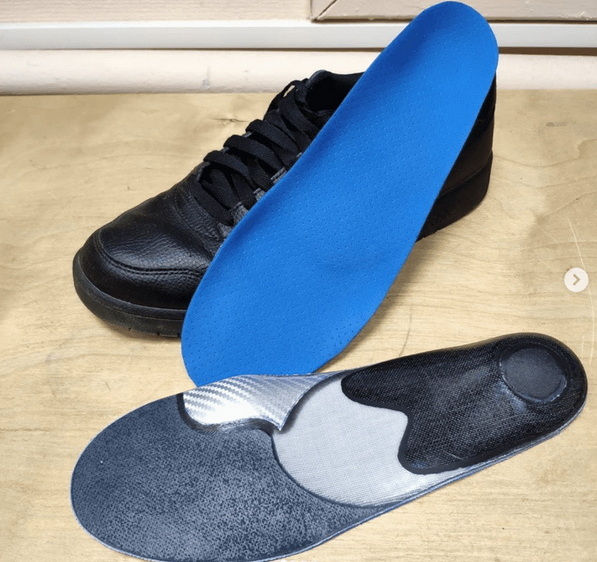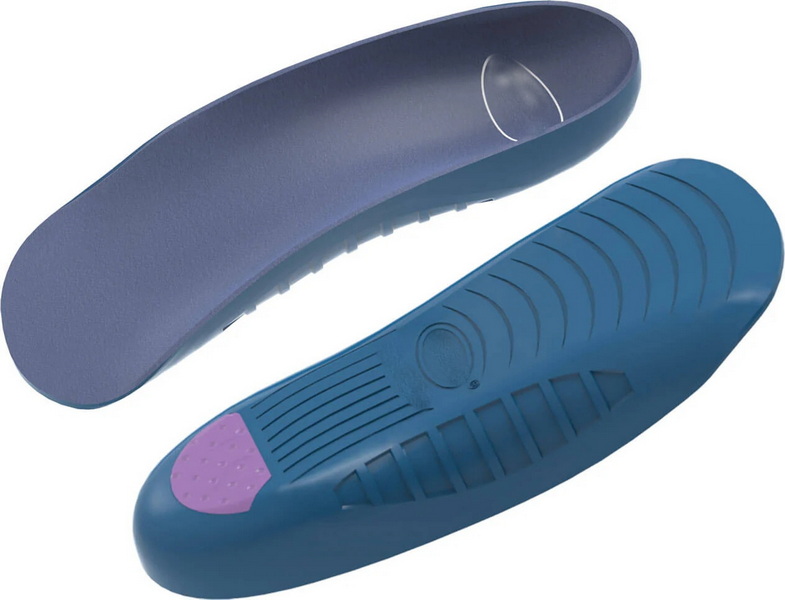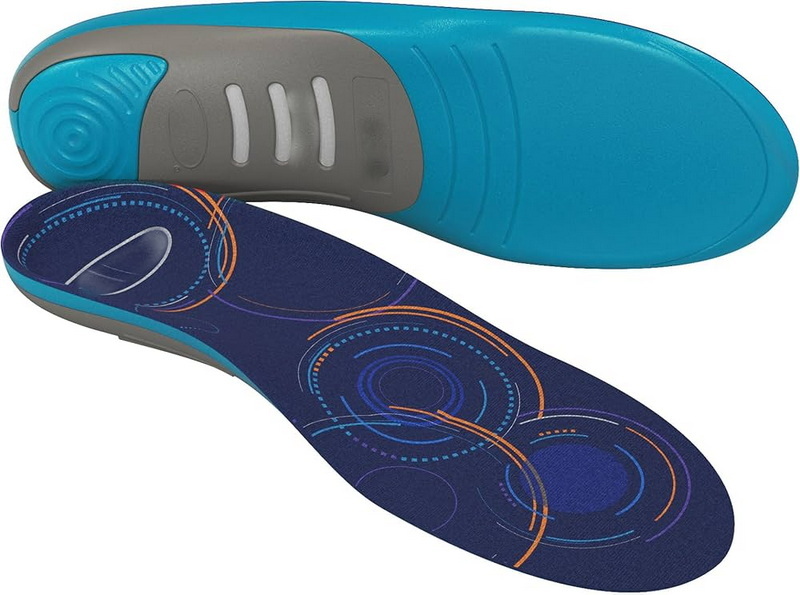Views: 222 Author: Edvo Publish Time: 2025-10-21 Origin: Site











Content Menu
● What Are Orthotics Shoe Inserts?
● Types of Orthotic Shoe Inserts
>> 4. Full-Length Custom Orthotics
● Materials Used in Orthotic Inserts
● Conditions That Orthotics Can Help
● Custom vs. Over-the-Counter Orthotics
● How to Know If You Need Orthotics
● How to Choose the Right Orthotic Inserts
● Why Choose Chinese OEM Orthotic Insole Manufacturers
● Advantages of Working with OEM Suppliers
● The Future of Orthotic Technology
● FAQ
>> 1. What's the difference between insoles and orthotics?
>> 2. Can orthotics be used in any type of shoe?
>> 3. How long do orthotic inserts last?
>> 4. Are orthotics suitable for athletes?
>> 5. How can I order custom OEM orthotic shoe inserts in bulk?
Comfort, posture, and mobility all begin at your feet. Whether you are an athlete, a worker standing for long hours, or someone struggling with foot pain, your footwear plays a crucial role. Orthotic shoe inserts are specialized devices placed inside shoes to provide additional support, correct foot posture, alleviate pain, and improve overall alignment.
Orthotic inserts don't just make shoes more comfortable — they enhance the way your body moves. By stabilizing your feet, orthotics can correct biomechanical imbalances, reduce stress on muscles and joints, and help prevent a range of common injuries. In the long term, they are an investment in your foot health and overall well-being.

Orthotics shoe inserts, often called *orthoses*, are custom-designed or prefabricated insoles crafted to fit inside your shoes. Their primary purpose is to redistribute pressure evenly across your feet, support the natural arches, reduce fatigue and joint stress, and relieve pain caused by various conditions.
They can be made from materials like foam, gel, EVA, or plastic, depending on the user's needs. Some are soft and cushioned for shock absorption, while others are firm and corrective to guide your feet into proper alignment. Orthotics can be worn in almost any type of footwear — from athletic shoes and work boots to dress shoes and sandals.
Each step we take exerts pressure on the feet, and over time, small biomechanical imbalances can cause pain in the ankles, knees, hips, or even the back. Orthotics help correct these imbalances by improving alignment, enhancing shock absorption, and reducing strain on soft tissue structures.
For example, a person with flat feet may roll their ankles inward while walking, a condition called overpronation. Orthotics help control this motion by supporting the arch and maintaining proper alignment. Similarly, individuals with high arches may benefit from orthotics that cushion impact and distribute pressure more evenly across the foot.
Over time, wearing well-fitted orthotics can correct minor postural issues, improve walking efficiency, and prevent further musculoskeletal problems.
Designed to support fallen arches or flat feet, these inserts help distribute weight properly and reduce midfoot pain. They are commonly used by people who experience fatigue during walking or standing for long hours.
These are great for stabilizing the heel, which is particularly helpful for conditions such as plantar fasciitis or heel spurs. They work by absorbing shock and alleviating pressure at the heel area.
These inserts target pressure around the ball of the foot. They help relieve pain caused by metatarsalgia or nerve compression, providing a soft cushion to restore comfort and relieve burning sensations.
These orthotics provide comprehensive coverage and are often made from 3D foot scans or molds. They are used to correct gait abnormalities, chronic pain, and severe biomechanical conditions.
Athletes rely on sports orthotics for stability and enhanced performance. These inserts help reduce injuries from repetitive motions, improve balance, and support sudden directional changes common in sports activities.
The performance of orthotics is deeply influenced by the materials used. Manufacturers carefully choose materials based on functionality, comfort, and durability.
- EVA Foam: Lightweight, flexible, and shock-absorbing. Ideal for daily wear and sports.
- Gel: Offers superior cushioning and pressure relief, making it perfect for sensitive feet.
- Carbon Fiber: Extremely strong yet thin, used for high-precision custom orthotics.
- Leather: Breathable and durable, suitable for orthotics used in dress shoes.
- Silicone: Flexible, washable, and often used for pediatric or diabetic foot care inserts.
Manufacturers may also combine multiple materials to achieve the best balance between comfort and structural support.

Orthotic inserts are not just for comfort; they serve medically recognized purposes for both prevention and treatment. They can effectively help with:
- Flat feet or fallen arches
- Heel pain and heel spurs
- Plantar fasciitis
- Overpronation and supination
- Knee, hip, or lower back pain
- Shin splints and Achilles tendonitis
By supporting correct foot biomechanics, orthotics indirectly improve the posture of your entire body. A small adjustment at your feet can correct imbalances that radiate through your knees, hips, and spine, reducing chronic pain and fatigue.
For diabetic patients, custom orthotics can also help prevent ulcers and other foot complications by reducing pressure points and friction.
Orthotics come in two major categories — custom-made and over-the-counter (OTC) inserts.
| Comparison | Custom Orthotics | OTC Orthotics |
|---|---|---|
| Fit | Precisely crafted for your unique feet | Standard, generic fit |
| Purpose | Corrective, therapeutic | Basic support and comfort |
| Durability | Long-lasting | Moderate lifespan |
| Cost | Higher investment | Affordable option |
| Use Case | Chronic conditions, athletes, post-surgery patients | Everyday use, general fatigue relief |
Custom orthotics provide the most accurate foot correction because they are based on detailed molds, pressure mapping, or scans. However, for general support, OTC inserts can still provide noticeable relief.
You may require orthotic inserts if you experience any of the following:
- Persistent soreness or fatigue in the feet or ankles.
- Pain in the arch, heel, or ball of the foot.
- Uneven shoe wear patterns.
- Postural discomfort spreading to knees or lower back.
- Frequent injuries while playing sports.
Even if you don't currently suffer from pain, orthotics can be a preventive measure, providing better structure and balance for long days on your feet.
Selecting the right orthotics requires understanding your physical condition, activity level, and footwear type.
1. Activity Type: Running and standing demand different cushioning properties.
2. Arch Type: Flat feet need firm arch support, while high arches need shock-absorbing cushioning.
3. Shoe Style: Select orthotics that fit seamlessly into your preferred shoe type.
4. Material Comfort: Ensure the right balance between firmness and flexibility.
5. Professional Guidance: A podiatrist or orthopedic specialist can help you select appropriately fitted options.
As technology evolves, 3D printing and digital scanning now make custom orthotics more accurate and accessible than ever.
Proper maintenance ensures that your orthotic inserts deliver consistent performance:
- Remove the insoles regularly to air them out and prevent odor.
- Clean them gently using mild soap and water; avoid harsh chemicals.
- Replace worn-out insoles every 6–12 months or sooner if they lose shape.
- Avoid placing orthotics in direct sunlight or dryers.
Good care habits extend product life and keep the insoles hygienic for daily use.
China has become a global center for producing high-quality orthotic products. As a leading Chinese insole manufacturer, we provide full-service OEM (Original Equipment Manufacturing) and ODM (Original Design Manufacturing) for international footwear brands, wholesalers, and medical suppliers.
Our services include:
- Custom materials: EVA, PU, gel, memory foam, and carbon fiber composition.
- Design flexibility: 2D sketches or 3D digital prototypes based on client requirements.
- Mass scalability: Production capacity suited for small-batch testing or large orders.
- Quality control: Each batch undergoes strict durability and comfort testing.
- Brand customization: Private labeling and tailor-made packaging for distributors.
By combining modern automation with skilled craftsmanship, Chinese manufacturers now deliver globally competitive quality while maintaining cost efficiency.
Partnering with an OEM orthotic manufacturer offers extensive advantages:
1. Private Label Production: You can develop your own branded product line quickly.
2. Technological Innovation: Access the latest material blends, molds, and ergonomic designs.
3. Flexible Order Quantities: Whether you need niche batches or mass production, OEM suppliers can adjust output efficiently.
4. Expert Consultation: Engineering teams assist in designing inserts that meet market-specific needs.
5. Compliance and Certification: Products can align with international quality standards such as ISO, CE, or FDA directives.
These factors make China an attractive hub for global orthotic supply chains.
Modern orthotic solutions are becoming increasingly sophisticated. Innovations include:
- 3D-Printed Orthotics: Custom-fit production for extreme precision.
- Smart Insoles: Sensors track pressure, balance, and gait patterns in real time.
- Eco-Friendly Materials: Recyclable polymers and bio-based EVA reduce environmental impact.
- Responsive Cushioning Systems: Advanced foams that adapt to foot pressure dynamically during motion.
With continued investment in research and design, the orthotics market is expected to grow significantly in both the healthcare and athletic sectors.
Orthotic shoe inserts play an undeniable role in maintaining healthy, pain-free feet. They provide the foundation for proper body alignment, assist in rehabilitation, and boost performance for people of all ages. Whether customized for medical reasons or selected for everyday comfort, orthotic inserts can significantly improve your quality of life.
Choosing a professional OEM orthotic insole manufacturer in China offers you reliable craftsmanship, scalable production capacity, and globally competitive pricing. For brands, wholesalers, and distributors, this partnership ensures both consistency and quality in every pair of insoles delivered.

Insoles provide basic cushioning and comfort, while orthotics are engineered medical devices that realign foot posture and correct gait issues.
Most orthotics fit well in sneakers and walking shoes. For narrow or formal shoes, low-profile orthotics are best suited.
Their lifespan varies from 6 months to 2 years, depending on material, frequency of use, and maintenance habits.
Yes. Sports orthotics reduce fatigue, improve shock absorption, and prevent injuries by stabilizing feet during high-impact activities.
You can collaborate with a certified Chinese OEM manufacturer to design and produce customized inserts under your brand specifications for wholesale or retail distribution.